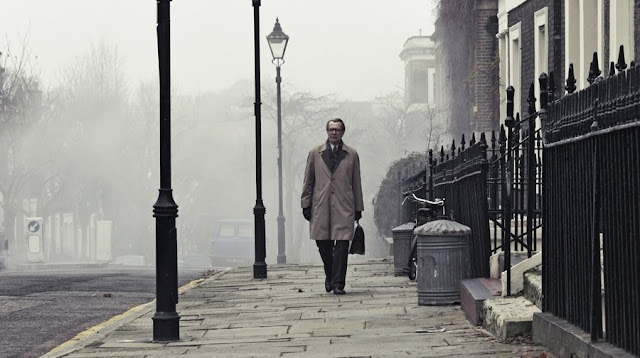You may remember, a few years back (I mean I
blogged about it so how could you possibly forget?) the Observer sent Carole
Cadwalladr to Paris to interview Frédéric Gros
at the time of the publication of his book A Philosophy of Walking.
She was a little a nervous (though as it turned out
not nearly as nervous as he was), and she wrote, “I am looking forward to going
more slowly. Though I am worried about my footwear. I am wearing Nike trainers.
Are they too sporting? Gros seems as if he might be more of a leather brogues
sort of man. He makes a jibe at those who try to commodify walking and sell it
back to us as ‘trekking.’ Who insist on ‘incredible socks’. And special
trousers with too many pockets.” A man after my own heart, obviously.
I was reminded of this late last year when I read a
piece in the New York Times Style Magazine (and no, I can’t quite believe I’m writing
that) about Simone de Beauvoir who became a walker in the early 1930s after she
was posted to Marseille as a teacher.
She was in her early 20s and a long way from Paris and her beau Jean-Paul Sartre.
To take her mind off
things she became a walker. She walked
every day she wasn’t teaching, setting out before dawn, winter and summer, walking
at first for a few hours, eventually for nine or ten at a time. It may have begun as displacement activity
but it became according to the woman herself a “mad enthusiasm.”
But here’s the beauty part. She wrote, “I didn’t bother with all the
preliminaries, and never obtained the semi-official rig of rucksack, studded
shoes, rough skirt and windcheater breaker.
I would slip on an old dress and a pair of espadrilles and take a few
bananas and buns with me in a basket.”
You know, I don’t think I’d even seen espadrilles
until I went to France for the first time, and I did find them genuinely
fetishistic. I think it must have been
the symbolic bondage of the ankle straps.
It surely can’t have been the rope soles and the wedgies.
De Beauvoir did most of the walking alone which probably explains why
there are no photographs from that period. Later she rather eschewed the "old dress" look.
Emily Witt who wrote the New York Times piece about de Beauvoir did
some walking of her own following in De Beauvoir’s footsteps but she writes, “I
did not do my hiking in espadrilles and an old dress. I had hiking boots, nylon pants and a
raincoat and a compass and a map.” This
is a picture of her walking, not very far I suppose since the caption reads
“Yaddo artist in residence Emily Witt, a non-fiction writer from New York,
leaves a reception celebrating the completion
of the new Greenhouse Studios at Yaddo.
 |
| Photo by Ed Burke for the Saratogian. |
Now, I’ve been reading Thomas Bernhard’s novel The Loser. One of the characters named Wertheimer is a great walker
but only in cities. He is described by a
fictionalized Glenn Gould as “the pavement walker” and Wertheimer thinks this is fair enough “I only walk on pavement, I don’t walk in the
country, it’s awfully boring and I stay in the hut.”
This hut in fact sounds reasonably comfortable, more of a shooting
lodge, but the novel’s narrator writes that in this hut, “he would get dressed
as if he were going for a fifty- sixty-kilometer hike – leather hiking boots,
thick woolen garments, a felt cap on his head.
But he would step outside only to discover that he didn’t want to go
hiking and would get undressed and sit down in the room downstairs and stare at
the wall in front of him.”
And later, ”No one pounded the street of Vienna like he did, coming and
going in all directions again and again until he was totally exhausted… He wore
out tremendous quantities of shoes. Shoe fetishist were words that Glenn
once said to Wertheimer, I think he had hundreds of shoes in his Kohlmarkt
apartment and that was also the way he drove his sister to the brink of madness.”
Well this is an odd thing, isn’t it?
Shoe fetishism is a broad church and who’s to say there aren’t some who
fetishize walking boots, (men are capable of fetishizing just about anything) but
I’m prepared to bet there aren’t many.
Things get even more interesting when we learn, in an interview in the
Believer with Bernhard’s brother, that Bernhard had a “shoe tic.” Yes I want to know more about that too.
Glenn Gould is not a completely open book to me but I
do know that the first of the 32 Short
Films About Glenn Gould has a long, long shot of him walking across a snowy
waste; a kind of inversion of the shot in Lawrence
of Arabia where Omar Sharif rides across the desert.
Anyway … when I went to do my Ramblings radio show for the BBC I gave
considerable thought to what I should were on my feet. I settled for these things:
They’re Sketchers and they contain memory foam, and they claim to be
the “most comfortable shoes in the world,” which is frankly asking for trouble,
but at least they looked vaguely subversive, and not at all like “proper”
walking shoes.
After we’d done the recording, the producer told me she was worried
when she first saw me turn up in those shoes, as if I might not be a serious enough
walker to cover the six of seven miles the show required. I might have said that was the whole point. I might have told her that I’d contemplated
turning up in patent dress shoes. Even so I did eventually throw away
those Sketchers.
They really weren’t comfortable at all.



























